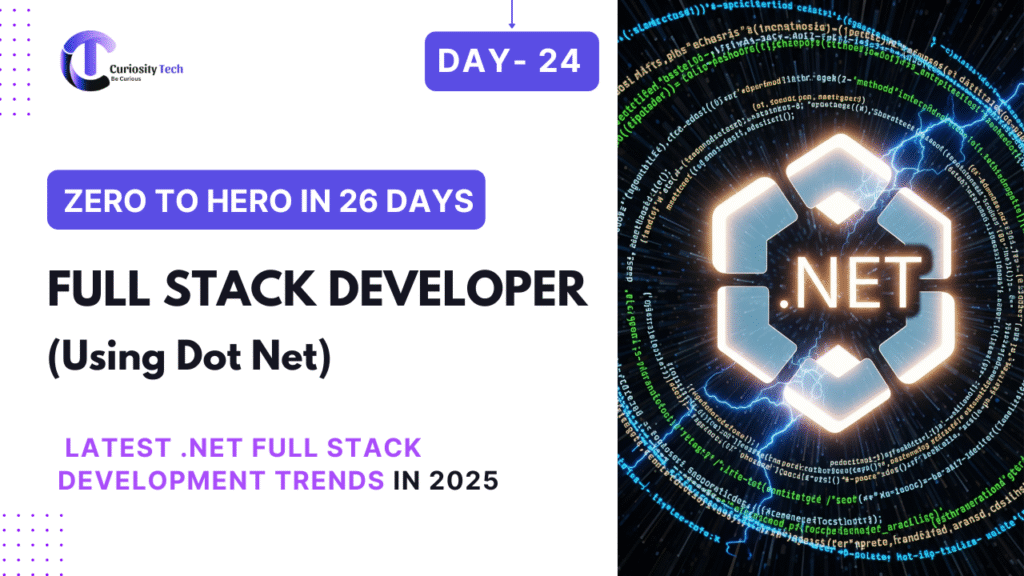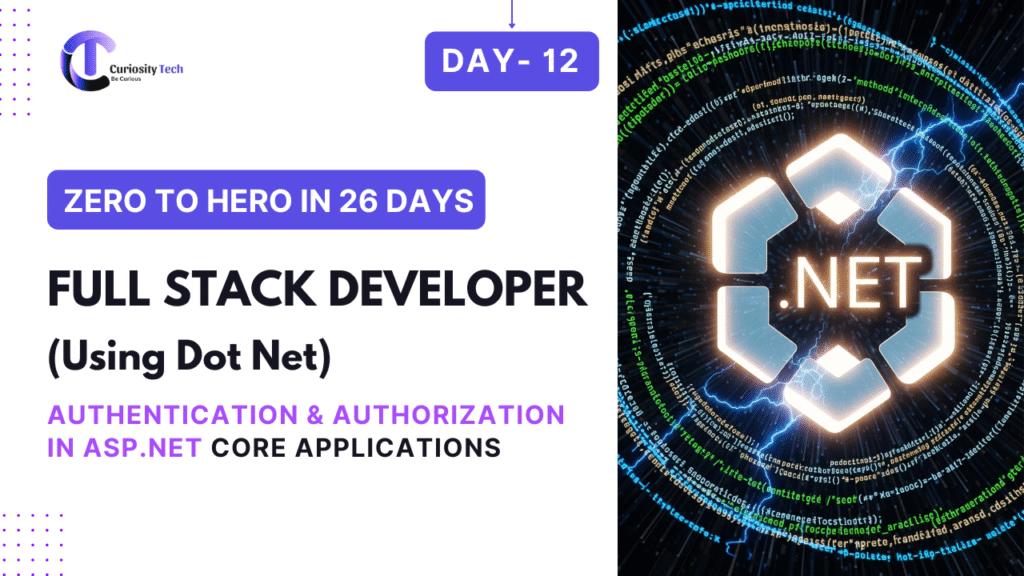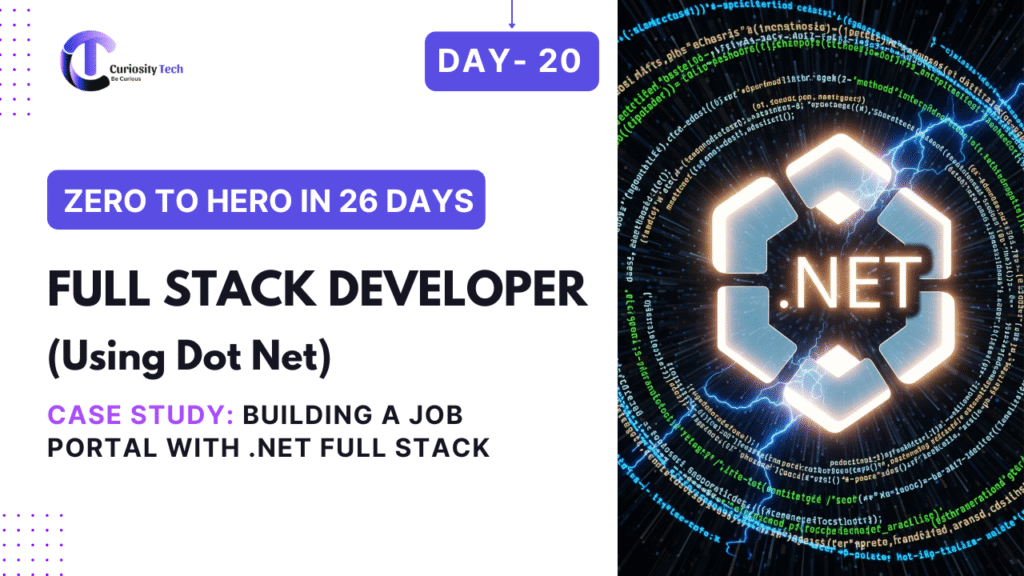Format: Analysis + future trends + diagrams + real-world applications
Introduction
The .NET ecosystem is evolving rapidly, with 2025 bringing new tools, frameworks, and paradigms for FullStack developers. Staying updated is crucial to build scalable, modern, and competitive applications.
At CuriosityTech.in, learners explore emerging trends, gaining insights to stay ahead in FullStack .NET development, and integrating cutting-edge technologies into real projects.
1. Trend 1: .NET 8 and Beyond
- Performance Boosts: .NET 8 introduces improved JIT compilation, smaller memory footprint, and faster runtime
- Unified Platform: Build Web, Desktop, Mobile, Cloud, and IoT apps on a single platform
- Hot Reload: Faster development cycles for frontend and backend changes
Impact: Developers can accelerate development, reduce bugs, and maintain high-performance apps
2. Trend 2: Microservices and Cloud-Native Architecture
- Microservices are becoming the standard for scalable FullStack apps
- Docker & Kubernetes for containerization and orchestration
- Cloud-first approach with Azure, AWS, and GCP integration
Diagram: Modern Microservices Deployment
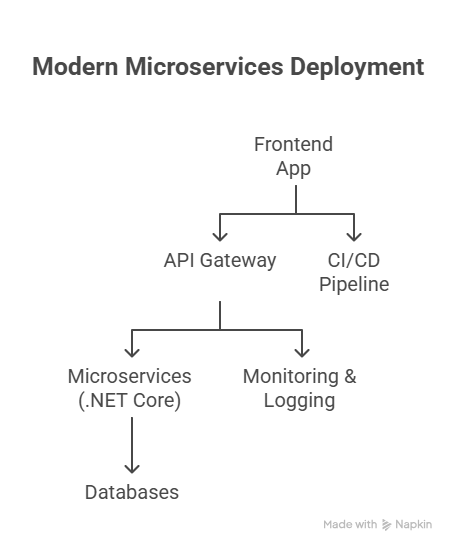
Impact: Enables scalability, fault tolerance, and independent deployment
3. Trend 3: AI and Machine Learning Integration
- ML.NET allows developers to integrate machine learning models into .NET apps
- Use cases: Job recommendation, predictive analytics, sentiment analysis
- AI-powered chatbots and automation for customer interaction
Impact: Applications become smarter and more personalized, enhancing user engagement
4. Trend 4: Modern Frontend Frameworks
- Blazor WebAssembly: Build interactive frontend apps using C# instead of JavaScript
- React & Angular continue as robust frontend frameworks
- SPA + PWA support for offline-first applications
Impact: Frontend development becomes more integrated with backend, reducing context switching and improving maintainability
5. Trend 5: API-First Development
- RESTful APIs remain standard, but GraphQL adoption is increasing
- API versioning, documentation, and testing are critical
- Secure, scalable APIs for multiple clients: web, mobile, IoT
Impact: Developers can deliver consistent experiences across platforms
6. Trend 6: Security & DevSecOps
- Identity, OAuth2, JWT for secure authentication
- Automated security testing integrated in CI/CD pipelines
- Cloud-native security tools for monitoring and threat detection
Impact: Security becomes part of the development lifecycle, reducing vulnerabilities
7. Trend 7: Serverless and Event-Driven Architecture
- Use Azure Functions or AWS Lambda for serverless backend services
- Event-driven microservices using Kafka, Azure Event Grid, or RabbitMQ
- Reduces infrastructure overhead and scales automatically
Impact: Cost-effective, scalable, and responsive to real-time events
8. Real-World Application: CuriosityTech Learning Platform
- Backend: ASP.NET Core Microservices + Azure Functions
- Frontend: Blazor WebAssembly + React Hybrid
- AI Integration: Personalized course recommendations with ML.NET
- Deployment: CI/CD to Azure, serverless functions for notifications
- Security: JWT + OAuth2 authentication for learners and instructors
Diagram: FullStack Modern Architecture
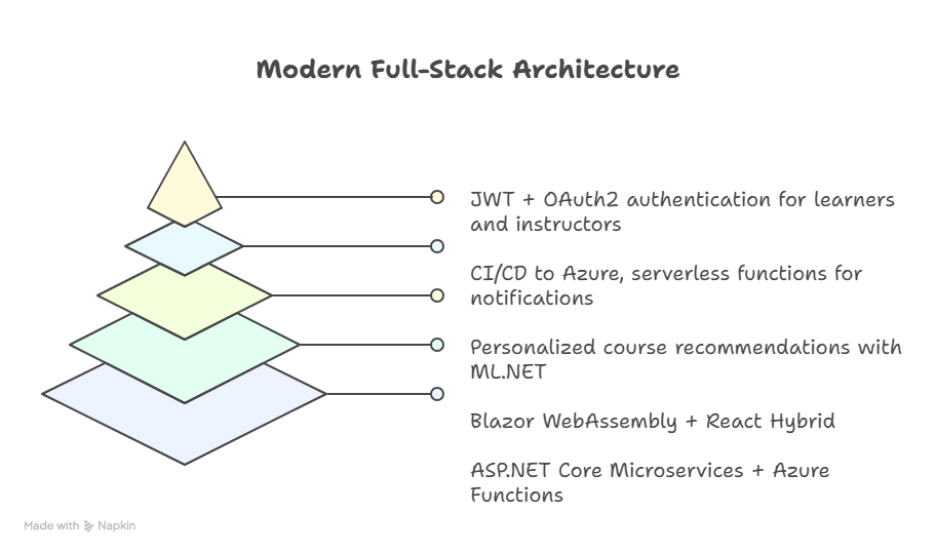
9. Best Practices for 2025 Trends
- Keep services modular for easier updates
- Use AI/ML responsibly, respecting user data
- Leverage serverless and microservices for scalability
- Maintain security-first approach with DevSecOps
- Adopt modern frontend frameworks integrated with backend
10. CuriosityTech.in Mentorship Insights
- Hands-on training on emerging .NET FullStack trends
- Guidance on microservices, AI integration, cloud deployment, and modern frontend
- Prepares learners for future-ready FullStack developer roles
Conclusion
Staying updated with .NET Full Stack trends in 2025 ensures developers can build high-performance, secure, and scalable applications. At CuriosityTech.in, learners gain practical insights into microservices, AI, modern frontend frameworks, cloud, and serverless architectures, keeping them ahead in the competitive industry.
The next step is Day 25 – Career Roadmap: How to Become a .NET Full Stack Developer, focusing on skills, learning path, and professional growth strategies.

